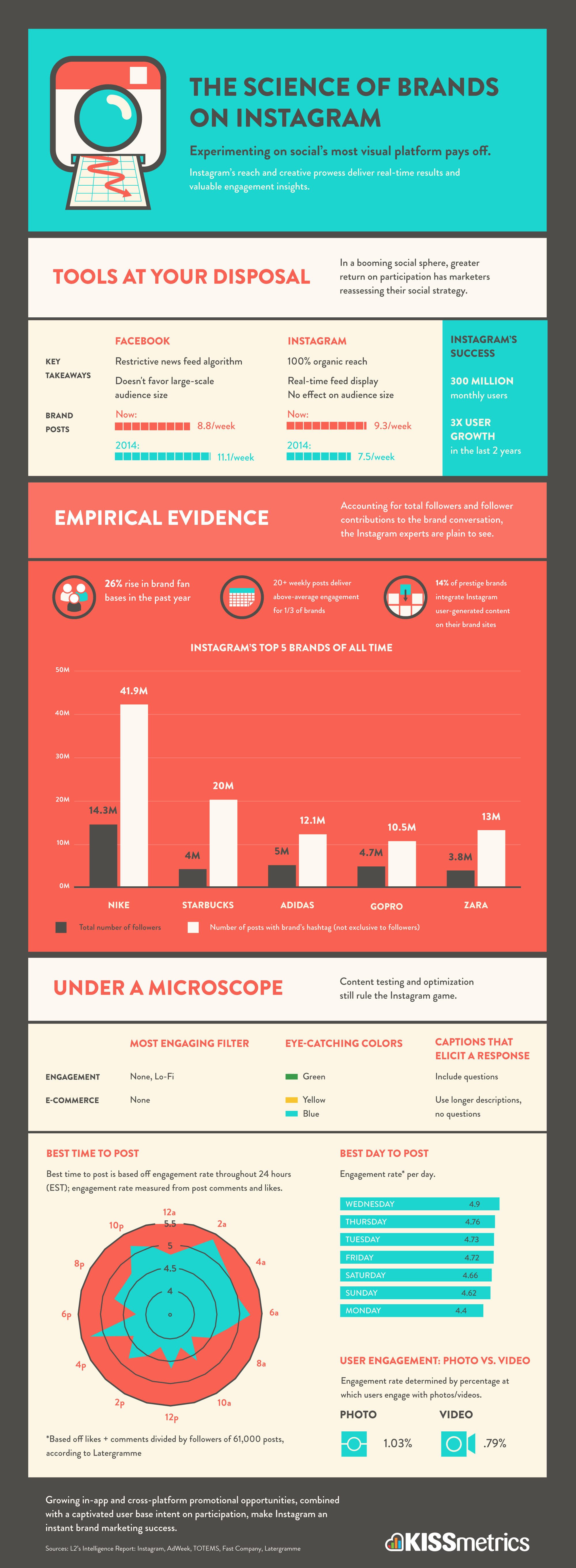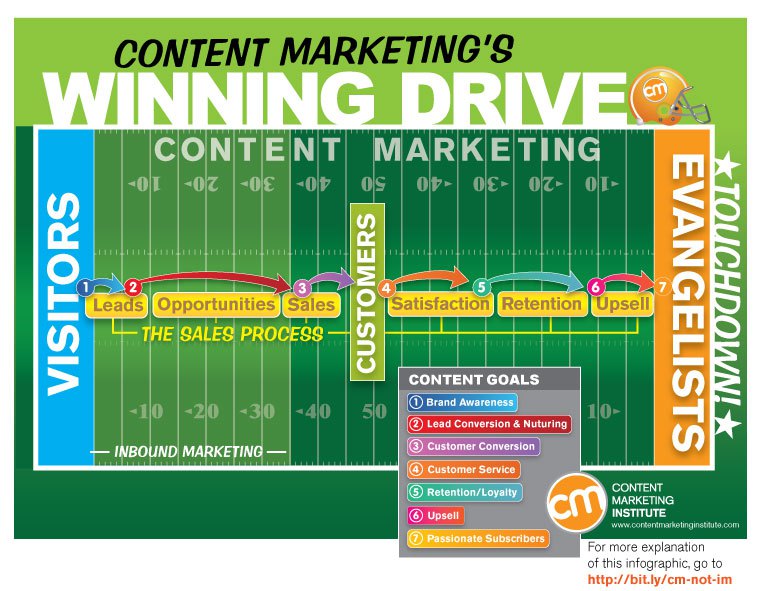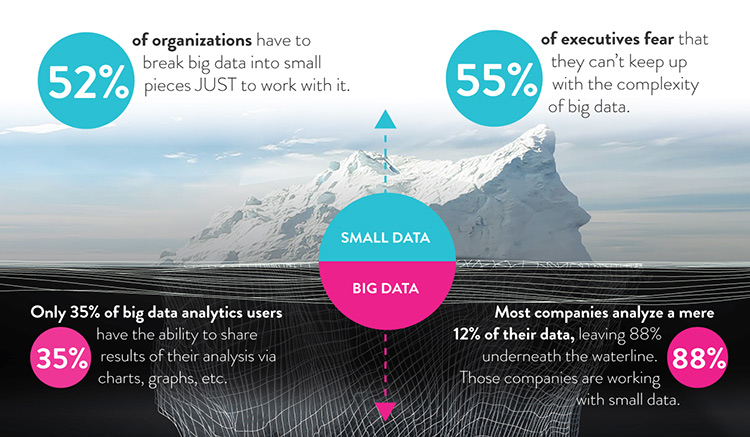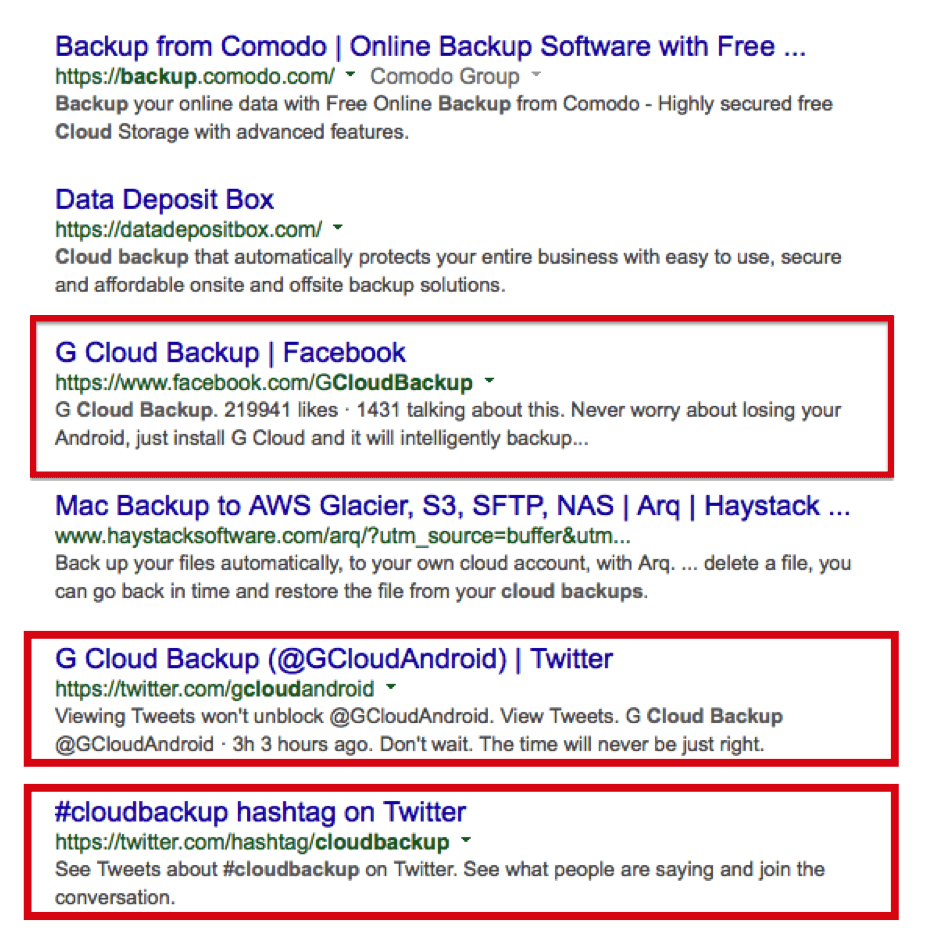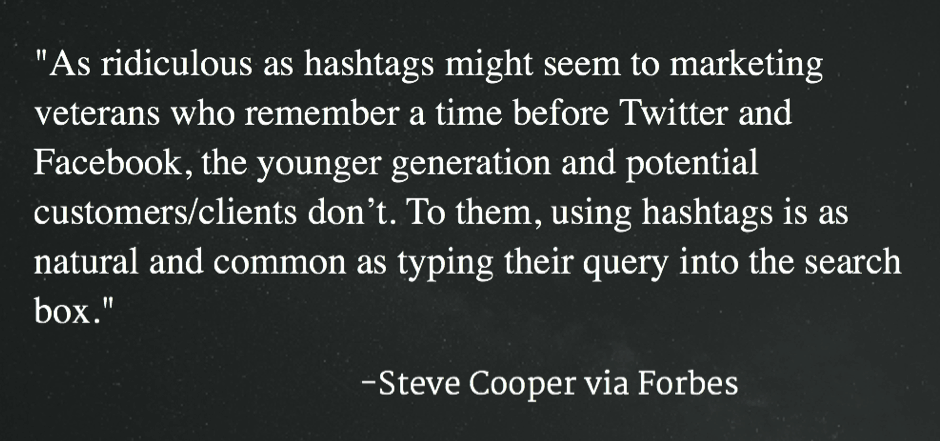You know all those blog posts about increasing AdWords conversion rates 572%, getting on Product Hunt 4 times in one day, and securing VC funding by hiring a sign spinner?
This isn’t one of them.
I had hopes of writing one, but what we did instead was a freaking mess.
Well, almost.
As a newborn AdWords focused agency, we wanted to use some other PPC channels to grow our email list and clientele.
Pretty ironic, right?
Now, you may be one of the very few advertisers who have plateaued their success on AdWords and just can’t squeeze any more profit out of the largest ad network in the world.
If so, you’re about as rare as the Taylor Swift “pegacorn.”
For those of you who have no idea what a pegacorn is, it’s a pegasus and unicorn mix.
Yes, they are very rare indeed.
But this post isn’t about AdWords. It’s about the other avenues you can use to drive more leads, conversions, and sales to grow your business; hopefully, by an extra 572%.
The AdWords alternatives we’re going to cover today aren’t exactly search engines. In fact, they’re more like AdWords display network alternatives that get results through demographic targeting.
See, we didn’t want to use the alternatives that people have already talked about. We wanted to seek out some new ad channels that haven’t been written about that much.
Facebook was obvious, so we didn’t want to do that.
Bing Ads was obvious, so we crossed that one out.
In this post, we’re not going to just be looking at 7 AdWords alternatives, but what we did to fail, so you can learn from our mistakes.
Let’s get started.
Picking Our Lead Magnet
As with anything marketing, if your offer is crap, then no beautifully designed landing page can save you.
We knew we had to create a lead magnet that would get people excited, and if we’re smart, a lead magnet that hadn’t been created before.
Throughout my years of doing AdWords, I’ve always been asked the question: “What can we do to get more phone leads?”
Since there hasn’t been a lot written on the topic, I thought that was a brilliant idea.
So, we created a guide on how to generate more phone leads with AdWords and Conversion Rate Optimization.
It ended up being 60 pages long, with 32 different ideas on AdWords and conversion optimization.
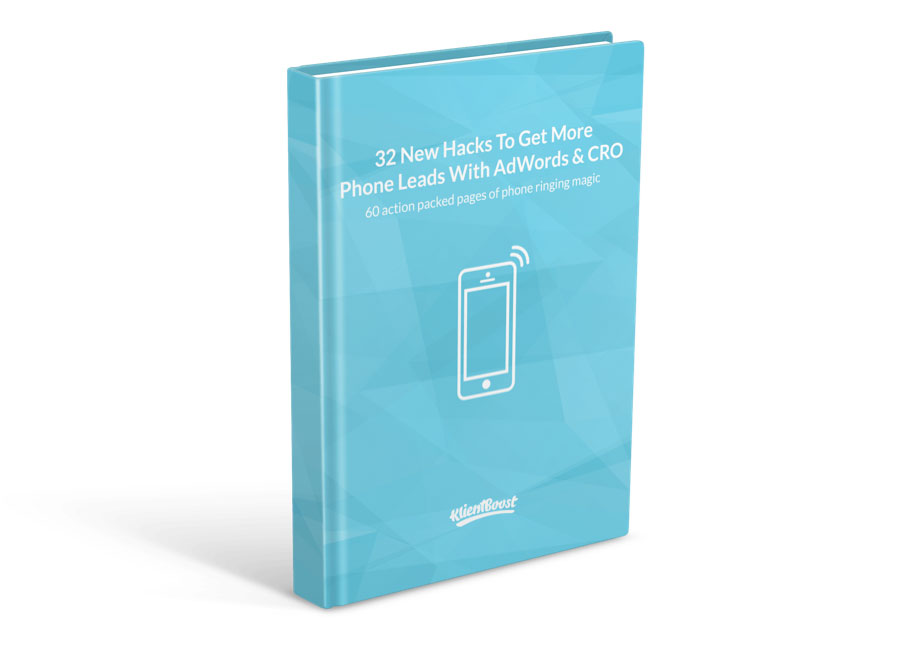
So, once we had our guide done, we needed to create a landing page.
We studied other guide/ebook landing pages and also read up on Eric Sloan’s “8 Examples of What Not to Do On Your Ebook Landing Page“.
We eventually ended up with this masterpiece of a landing page: http://grow.klientboost.com/get-more-phone-leads/.
Finding a Partner and Upsetting a Few People
With the guide and landing page done, we knew we could make it even more successful if we found a bigger company/partner to help with the promotion.
Since the guide is about generating more phone leads, what better company than a call tracking analytics solution?
In the PPC industry, call tracking has become more and more popular in order to understand which keywords, ads, and placements are making the phone ring.
So, I did what anyone else would do, and got a little ahead of myself.
I started reaching out to all the well-known call tracking companies, at the same time.
It was a huge mistake.
Companies like CallRail, DialogTech (formerly IfByPhone), Invoca, CallTrackingMetrics, Marchex, CallSource, and Century Interactive all got an email from us with a custom made image like this:

Since we’re a small and new company, we didn’t think anyone would say yes.
But, everyone said yes.
We eventually looked at employee counts and funding numbers on CrunchBase to decide who we should partner with.
It wasn’t an easy decision, but we hit it off really well with Invoca and found out they were a nearby company based in Santa Barbara, CA. They also sport some serious clients (which we’ll talk about later).
With the guide done, the landing page done, and the partner done, it was on to the AdWords alternatives:
#1 – Reddit Ads
Reddit has a very engaged and smart community of visitors, but their ad platform is horrible.
Within it, you get to decide which subreddits you want to target (which are smaller, more niche community pages that revolve around certain topics).
For our guide, we decided to target the subreddits of /PPC and /AdWords, but quickly realized that all ad slots were filled for the next three months.
Since Reddit allows only one ad spot per subreddit, the space quickly gets crowded.
We opted for the subreddits of /Advertising and /AdOps.
The results we’re pretty bleak:

We got 43 visitors and 2 guide downloads for a total of $51.14. That’s a $25.57 CPA.

We would’ve spent more if we’d had the chance to target the subreddits that were more relevant to our guide, but it’s hard to do when Reddit doesn’t tell you which days are available or open to advertise.
Now, that doesn’t mean that Reddit ads won’t work for you.
There are some (although few) examples out there of people who’ve successfully used Reddit ads to drive sales and conversions. One who sticks out is Ryan Luedecke.
He catapulted his beef jerky business and made $2,200 in sales from a $400 investment.
The story got shared quite a bit, and after reading what he did, it became apparent that what we were doing with our guide might not ever work if we didn’t get in front of the right audience.
As I mentioned earlier, Redditors are some super clever folks. They can’t stand self-promotion. Reddit ads seem to work the best when they’re not ads at all, but actual helpful content.
We moved on to the next one:
#2 – Yahoo! Gemini Ads
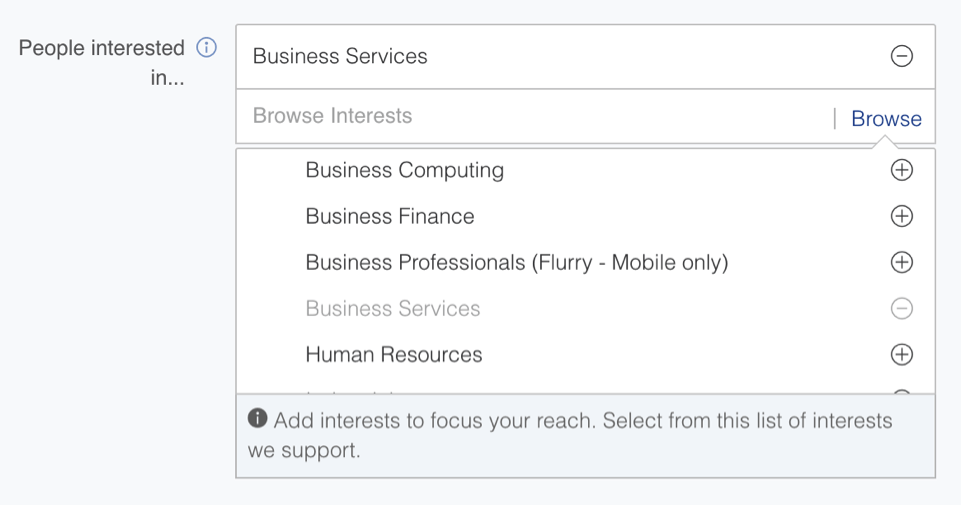
Yahoo! Gemini is Yahoo!’s answer to native advertising.
We’ve had some luck with this platform for some of our clients, so we thought it would be a sure thing for us.

We got 281 visitors and 2 guide downloads for a total of $212.24. That’s a $106.12 CPA.
Within the Gemini platform, you can set your campaign around one of three goals:
- Visit my website
- Know my brand
- Download my app
We chose “Visit my website” and created an ad we wanted to run.
Then we got to choose the targeting method and opted for People interested in > Business Services > Business Services.
And just to make sure we had a little control, we threw in some keywords for people searching for:

So, what happened?
Yahoo! Gemini ads are not the most targeted ads and, just like Reddit Ads, seem to work best when they fit within the topics on the page being covered.
Obviously, the keyword intent from the Google AdWords search network isn’t the same as this platform’s.
But, with banner blindness doing nothing but increasing, native advertising like the Gemini platform is set to continue to see growth.
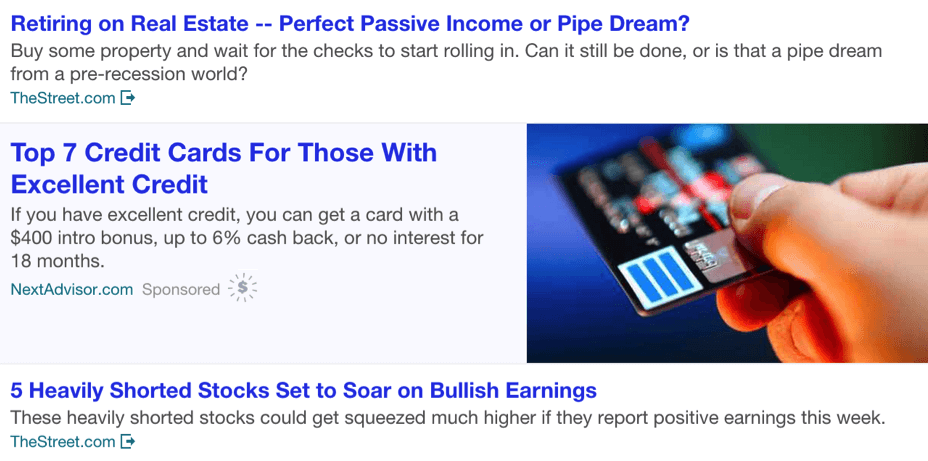
Here’s an example of what a Yahoo! Gemini ad looks like
The third time was the charm:
#3 – Twitter Ads
Okay, so we struck out twice, but we were only $263.38 in.
Next up was Twitter ads and, boy, we had a much better experience.
We got 297 visitors and 49 guide downloads for a total of $198.15. That’s a $4.04 CPA.

So, what happened?
What we found was that the Twitter audience was much more engaging and interested in the problem we were helping them solve.
We targeted followers of notable blogs like Unbounce, KISSmetrics, and competitor AdWords agencies. We found that most of the downloads came from other agencies, not client prospects.
So, even though we had a lower CPA, we couldn’t convert those acquisitions into customers, just maybe some new fans.
But, don’t let that stop you.
Twitter ads have been growing in popularity, and it’s a killer ad platform when you focus on leading your ads with education and value.

That’s a steady increase in interest
You’ll also find no shortage of case studies and in-depth posts on how to drive conversions with Twitter.
This is one of the better AdWords alternatives out there.
What was next?
#4 – BuySellAds
Okay, so we were beginning to see a trend as to why our guide wasn’t performing as well as we’d hoped (we’ll cover that at the end). But, that wasn’t going to stop us from continuing our experimentation.
Next up was the media buying platform of BuySellAds.
BuySellAds allows you to buy impressions on a cost-per-thousand impressions (CPM) bidding basis from high-quality publisher sites that don’t want to be cheaper out from the Google AdSense network.
Since, at this point, we understood that most of our downloads came from marketing agency people, we thought the next perfect targeting would be the Search Engine Journal (SEJ).

We got 321 visitors and 2 guide downloads for a total of $240. That’s a $120 CPA.
It was far from our Twitter ads success earlier.
Here’s a look at the internal BuySellAds dashboard and the low click-through rate:
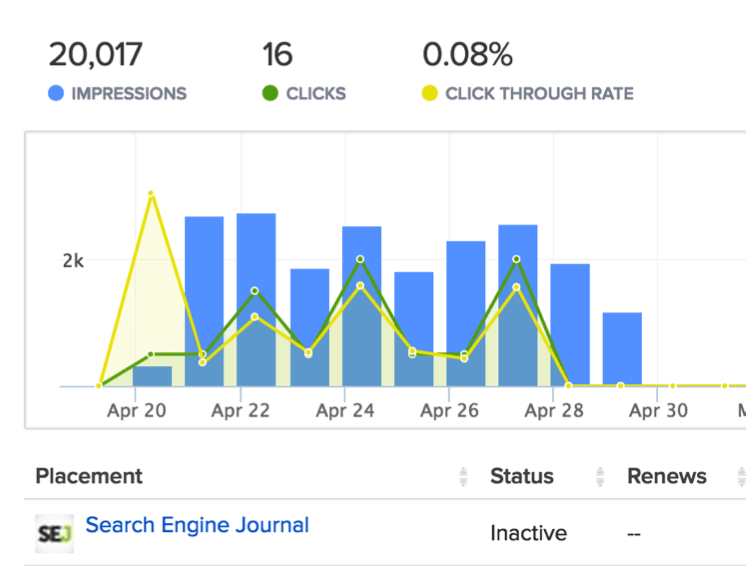
Now, the cool thing about BuySellAds is that you have a ton of options when it comes to “thought-leading” type of sites.
The downside is that you buy a high-priced, fixed number of impressions that usually work best with low friction/valuable content that gets people into your marketing funnel really early.
Most likely, those people are not in “ready-to-buy” mode.
Something to keep in mind as you’re paying via CPM is to select ad spots that are above the fold.
If not, you stand the chance of racking up your impressions with even fewer people actually seeing your ad.
#5 – StumbleUpon Ads
StumbleUpon is such a fun and awesome site for mindless swiping.
Kind of like Tinder, but for whatever topic you’re into.
The great thing about StumbleUpon ads is that you can really get some high volume visitors and, if you’re lucky, some great engagement.
We got 528 visitors and 5 guide downloads for a total of $100. That’s a $20 CPA.
But, we just didn’t see that engagement.
In fact, the average time on site from a StumbleUpon visit wasn’t even one second.
It was less than one second.

I didn’t even know Google Analytics could be that rude
Was it because our landing page was that boring or because the first impression was that bad?
Or, was it because we shouldn’t expect to use StumbleUpon ads as a conversion tool, but as more of a blog discovery tool, as this KISSmetrics article suggests.
#6 – LinkedIn
Okay, by this time, we had definitely realized that we might have picked a guide topic that was a little too niche.
But, to give it one last go, we headed over to LinkedIn and tried to target the people who would love more phone leads – sales people.

We got 22 visitors and 5 guide downloads for a total of $113.07. That’s a $22.61 CPA.
Okay, not that bad, but definitely not sustainable either.
Even though the campaign ran for only about a week, we saw decent CTRs of 0.521%, which is pretty high for LinkedIn. Still, it just didn’t make sense to keep running as the cost per click was around $7.54.
So, it was on to the best AdWords alternative of them all:
#7 – Partner Promotion
Remember that I mistakenly asked all the call tracking analytics companies to join forces with us at the same time? And that we ended up going with Invoca?
Well, not only did we create an awesome partnership that could continue to grow in the future, but Invoca sent out our 60-page guide to their entire email list.
Results?

We got 774 visitors and 343 guide downloads for a total of $0. That’s a $0 CPA.
Invoca sent almost 400 downloads to recipients who included marketing department people from companies like PayPal and Allstate Insurance. Those people got on our email lists and are still there, interacting with our emails and our blog posts.
We also secured a speaker for our #CRODay meetup that we held at our office in Costa Mesa, CA.
Who knows what the future will hold.
What We’d Do Differently Next Time
We quickly learned not to create a lead magnet that fits a narrow audience.
We could’ve created a much beefier guide on AdWords as a whole or some unknown landing page hacks that would appeal to a broader audience.
Instead, we took the route of specificity and didn’t get as many downloads as we had hoped.
Also, because we were so aggressive with so many different AdWords alternatives, we didn’t prepare to create additional unique ad copy or imagery to go with every channel.
I’m sure we could have gotten much better results through iterative testing and constant tweaking.
Conclusion
All together, we got 2266 visitors and 408 guide downloads for a total of $914.60. That’s a $2.24 CPA.
Since many people want to learn something brand new, make sure your content/guide tries to accomplish that, or paints old information in a different way.
Take these AdWords alternatives with a grain of salt and understand that each channel takes time to perfect.
Don’t test the depth of the river with two feet.
About the Author: Johnathan Dane is the founder of KlientBoost, a California based PPC agency that’s on a mission to grow companies. He’s been interviewed by Google and has a German Shorthaired Pointer named Tanner. Connect with him on Twitter.

